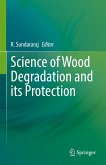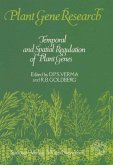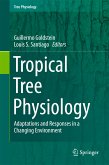"Wood and Tree Fungi" provides an up-to-date overview of the various wood and tree fungi that damage trees, lumber, and timber, with special focus given to identification, prevention, and remediation techniques.
First, the fundamentals of cytology and morphology, growth and reproduction, formal genetics, and enzymatic wood decay are addressed. Causative factors are then analyzed, followed by descriptions of interactions like antagonism, succession, and mycorrhiza.
The more practical section describes damages by viruses on trees and by bacteria on the xylem of trees and on structural timber, wood discoloration caused by molds and stain fungi, wood decays by rot fungi, and preservation methods. The habitats of wood fungi are described as well as tree care. Important tree pathogens and wood decay fungi are characterized for prevention and identification.
The final section focuses on the positive effects of wood-inhabiting microorganisms, covering past and classical methods like myco-wood, mushroom cultivation, biological pulping, and "palo podrido", as well as recent biotechnological processes.
First, the fundamentals of cytology and morphology, growth and reproduction, formal genetics, and enzymatic wood decay are addressed. Causative factors are then analyzed, followed by descriptions of interactions like antagonism, succession, and mycorrhiza.
The more practical section describes damages by viruses on trees and by bacteria on the xylem of trees and on structural timber, wood discoloration caused by molds and stain fungi, wood decays by rot fungi, and preservation methods. The habitats of wood fungi are described as well as tree care. Important tree pathogens and wood decay fungi are characterized for prevention and identification.
The final section focuses on the positive effects of wood-inhabiting microorganisms, covering past and classical methods like myco-wood, mushroom cultivation, biological pulping, and "palo podrido", as well as recent biotechnological processes.
Dieser Download kann aus rechtlichen Gründen nur mit Rechnungsadresse in A, B, BG, CY, CZ, D, DK, EW, E, FIN, F, GR, HR, H, IRL, I, LT, L, LR, M, NL, PL, P, R, S, SLO, SK ausgeliefert werden.
From the reviews:
"The book (334 pages) is an updated revision of the German edition 'Holdz-und Baumpilze' from 1994. ... The book is illustrated with 74 figures (12 coloured pictures) and 49 tables. ... The book is of great interest to scientists, students, professionals working in wood protection, as well as foresters." (Benoit Marçais, Annals of Forest, Vol. 63 (2), 2007)
"The book (334 pages) is an updated revision of the German edition 'Holdz-und Baumpilze' from 1994. ... The book is illustrated with 74 figures (12 coloured pictures) and 49 tables. ... The book is of great interest to scientists, students, professionals working in wood protection, as well as foresters." (Benoit Marçais, Annals of Forest, Vol. 63 (2), 2007)
Aus den Rezensionen: "... eine aktualisierte, signifikant erweiterte und ins Englische übersetzte Neuauflage des bewährten Lehrbuches 'Holz und Baumpilze' ... Das Buch gibt anhand von gut gewählten Beispielen einen aktuellen und umfassenden Überblick über das Fachgebiet Holzmikrobiologie und es erschliesst eine Fülle von - auch deutschsprachiger - Originalliteratur. Es zeichnet sich durch hohe Detailgenauigkeit aus: Jede Aussage wird exakt belegt ... was den Wert dieses Buches als Nachschlagewerk begründet ... Das Buch ist sehr sorgfältig gemacht ... Das sehr informative und doch kompakte Buch kann allen empfohlen werden ..." (OTTMAR HOLDENRIEDER, in: Schweizerische Zeitschrift für Forstwesen, 2007, Vol. 158, Issue 3-4, S. 80 f.) "Das Buch gibt einen aktuellen Gesamtüberblick über holzverfärbende und holzzerstörende Pilze sowie Viren und Bakterien in Bäumen und Holz, die sowohl für den Mykologen interessant als auch für den Praktiker von Bedeutung sind. ... Im praktischen Teil befasst sich das Buch mit den spezifischen Holzschäden durch die verschiedenen Organismen sowie Möglichkeiten der Schadensvorbeugung, -erkennung und -bekämpfung und dem Holzschutz. Positive Auswirkungen der Holzpilze werden genannt. Der Anhang enthält einen Bestimmungsschlüssel." (in: holztechnologie, 2008, Vol. 49, Issue 1, S. 52)









